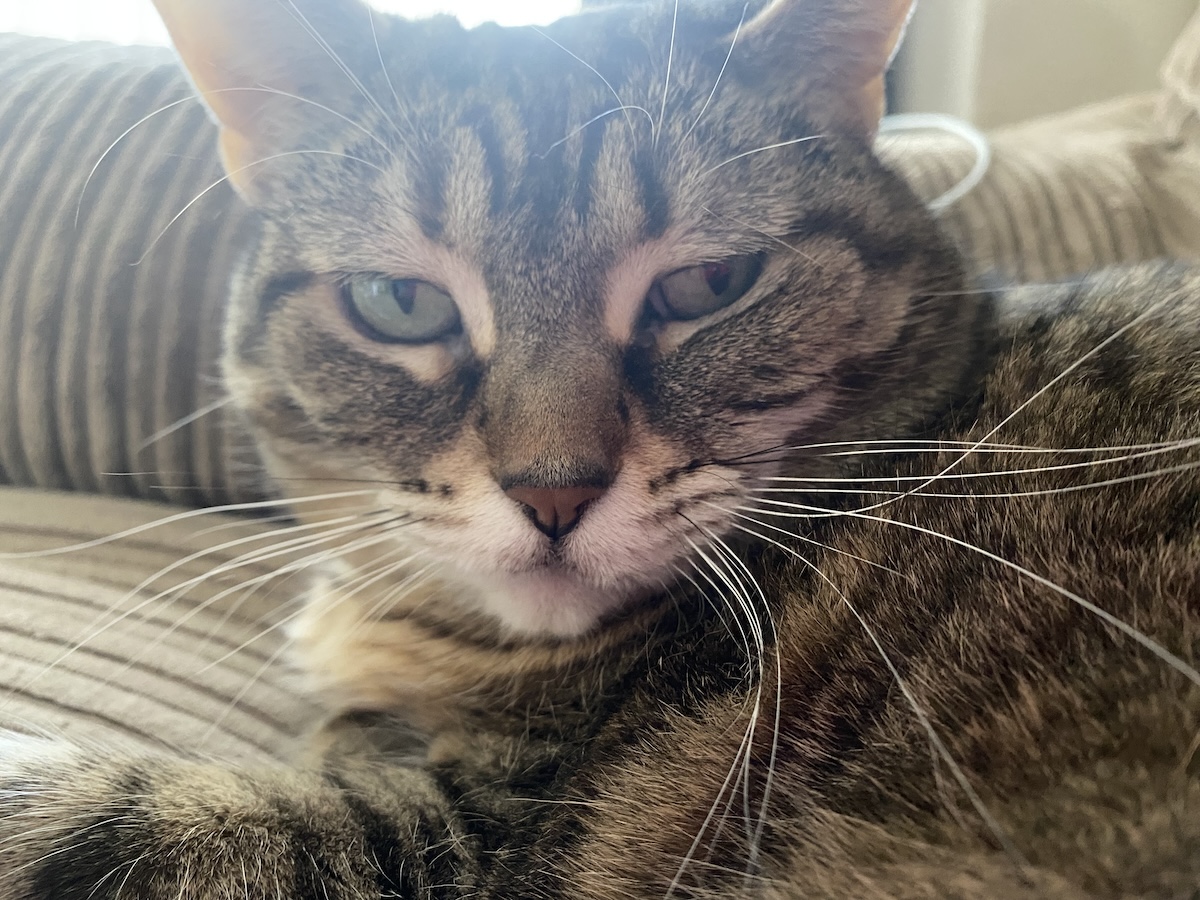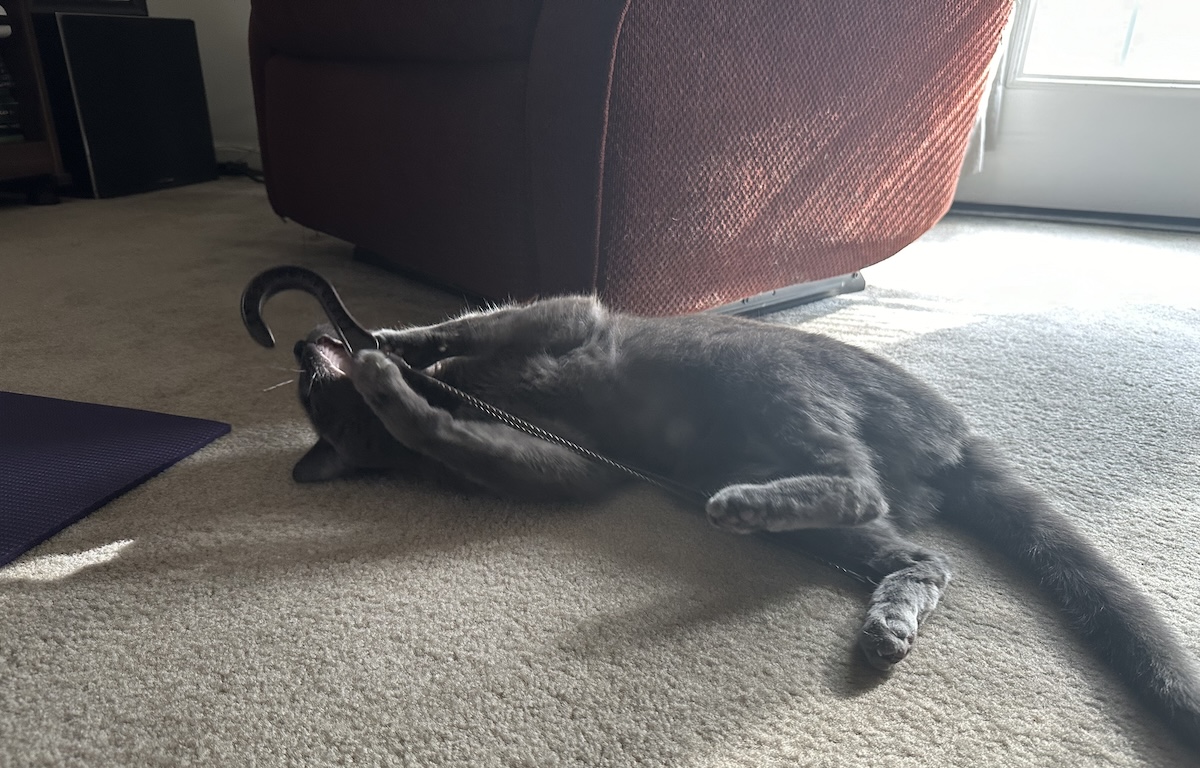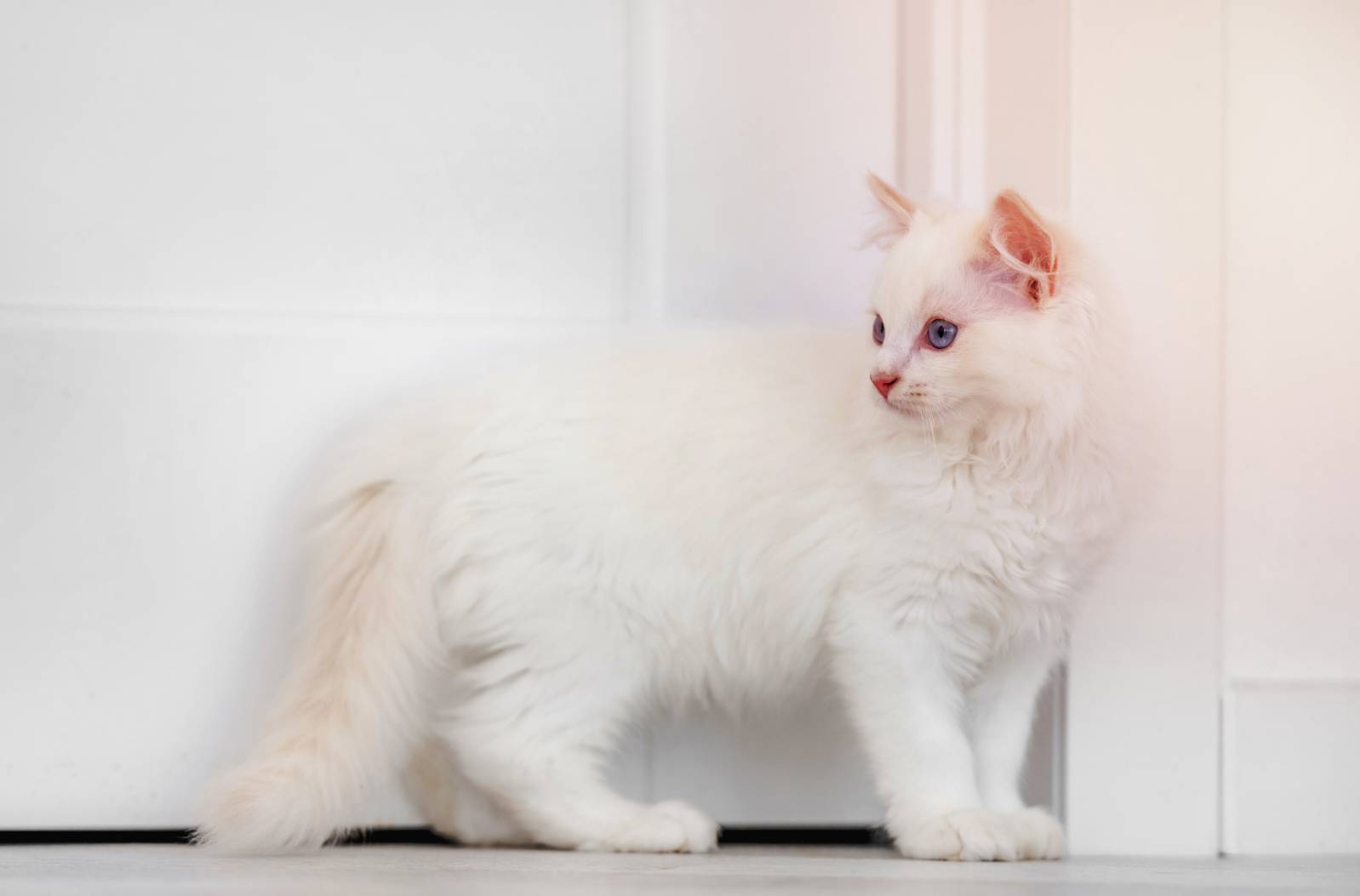Click to Skip Ahead
Wrestling a cat into a costume or a Christmas jumper can be challenging, and you might find yourself on the wrong end of a sharp swipe if you try. However, hats are always fun and don’t usually require much effort to get them on your cat.
Some DIY hats might require a few skills, like knitting or crocheting, but there are also plenty of ideas that you can tackle if you’re new to the world of crafting. Below we have hats that both you and your cat can enjoy together:
The 17 DIY Hats for Cats
Fabric & Felt Hats
1. Birthday Party Hat by Crafty Lumberjacks

| Materials: | Felt, pompom, elastic, paper cone template (optional) |
| Skill level: | Beginner |
| Other tools needed: | Scissors, glue gun, fabric glue |
Getting everything glued, especially when you’re working with a small shape, can be a little difficult. But this party hat isn’t that tricky to construct, and your cat will look party-ready when it’s done!
2. Wizard Felt Hat by Hadrix
| Materials: | Felt, glue, sequins |
| Skill level: | Beginner |
| Other tools needed: | Scissors, ruler |
Your cat will look simply enchanting in this wizard’s hat, and if you have a cloak in your wardrobe, you could even dress up too and go as a magical pair this Halloween. We have no doubt you’ll have a shot at winning the dress-up competition!
3. Royal Cat Crown by Professor Pincushion
| Materials: | Fabric, thread, sequins, stuffing or batting |
| Skill level: | Intermediate |
| Other tools needed: | Fabric glue, needle, scissors, sewing machine (optional) |
This crown is perfect for a cat that sits on its throne (cat tree) and surveys the kingdom (the house where it lives rent-free). Your cat will enjoy the royal treatment, and your friends and family will adore the costume.
4. Egyptian Cat Headdress by Professor Pincushion
| Materials: | Felt, thread, sequins |
| Skill level: | Intermediate |
| Other tools needed: | Fabric glue, needle, scissors, sewing machine (optional) |
If you’re feeling confident and want to try your hand at something that’s a little different, this project is the one for you. The Egyptians used to worship cats, and we can see why! It’s one of the more difficult projects, but it’s definitely worth it.
5. No-Sew Cat Hat by Cut Out & Keep

| Materials: | Fleece, yarn |
| Skill level: | Beginner |
| Other tools needed: | Scissors |
This easy cat hat requires only two materials and a pair of scissors to make. Even if you’ve never made a craft before, you should be able to create this simple hat for your kitty. Choose any color yarn or fleece you want. The hat can be made for any size cat, but the simple directions don’t provide any guidance on how to measure your kitty. You’ll likely need to estimate how big you need to make this hat. With a simple pom-pom design, this hat is perfect for any occasion or photo opportunity.
6. Ewok Cat Hat by Instructables

| Materials: | Leather, twine, leather cord |
| Skill level: | Beginner |
| Other tools needed: | Scissors, leather punch |
Star Wars fans will swoon over the chance to dress their kitty in this adorable Ewok cat hat. If you aren’t a fan of the Force yourself, this hat also makes the perfect gift for any Star Wars lovers in your life. This no-sew hat is easy to make, even for inexperienced crafters. The directions are basic, relying mainly on photographs to show you what to do. However, you do have to make your own pattern to cut out the leather. This hat will look especially cute on fluffy cats like Persians or Himalayans, who already resemble the fictional forest creatures that inspired this look.

Knitted Hats
7. Santa Hat by Spindles & Spices

| Materials: | Yarn |
| Skill level: | Intermediate |
| Other tools needed: | Knitting needles, scissors |
No festive period is complete until all the family has dressed up, and now your cat can too with its very own Santa hat! We’re sure they will be ecstatic that they can now look as festive as the family for this year’s holiday card.
8. Bobble Hat for Cats by Craft Foxes
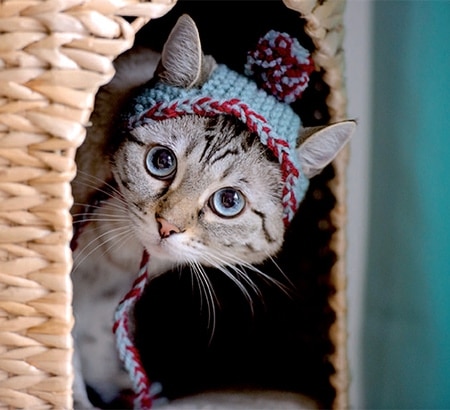
| Materials: | Yarn (20 yards of one color, 5 yards of another) |
| Skill level: | Beginner-intermediate |
| Other tools needed: | Knitting needles, yarn needle, pom pom maker (optional)birthd |
This knitted hat helps your kitty stay warm and look adorable in cold weather. Featuring ear holes for comfort and a drawstring to keep it in place, this hat can be made using your choice of yarn colors to complement your cat’s coat. If you know how to knit, this project should be easy. The directions are clear and detailed. Inexperienced knitters may find this hat a bit more complicated, but it’s still a good choice for beginner crafters. Even if your cat doesn’t tolerate wearing this hat, you should be able to get some cute photos.

Crochet Cat Hats
9. Small Top Hat by Mad Hooker

| Materials: | Yarn |
| Skill level: | Intermediate |
| Other tools needed: | Crochet hook, scissors |
Your male cat could look like a distinguished gentleman, or maybe he’s dressing up as a snowman. Whatever the occasion, this small top hat is a very cute look!
10. Mini Sombrero by Hooked on Patterns

| Materials: | Yarn |
| Skill level: | Intermediate |
| Other tools needed: | Crochet hook, scissors |
It’s fun, colorful, and perfect for the summer to keep the sun out of your cat’s eyes as it goes on an adventure in the backyard in this sombrero.
11. Giddyup Kitty! by Spindles & Spices

| Materials: | Yarn |
| Skill level: | Beginner |
| Other tools needed: | Crochet hook, scissors |
It only takes up an hour or two of your time and suddenly your cat can fulfill its dream of a life in the Wild West with this cute, mini cowboy hat.
12. Crochet Elf Hat by Okie Girl Bling ‘n’ Things
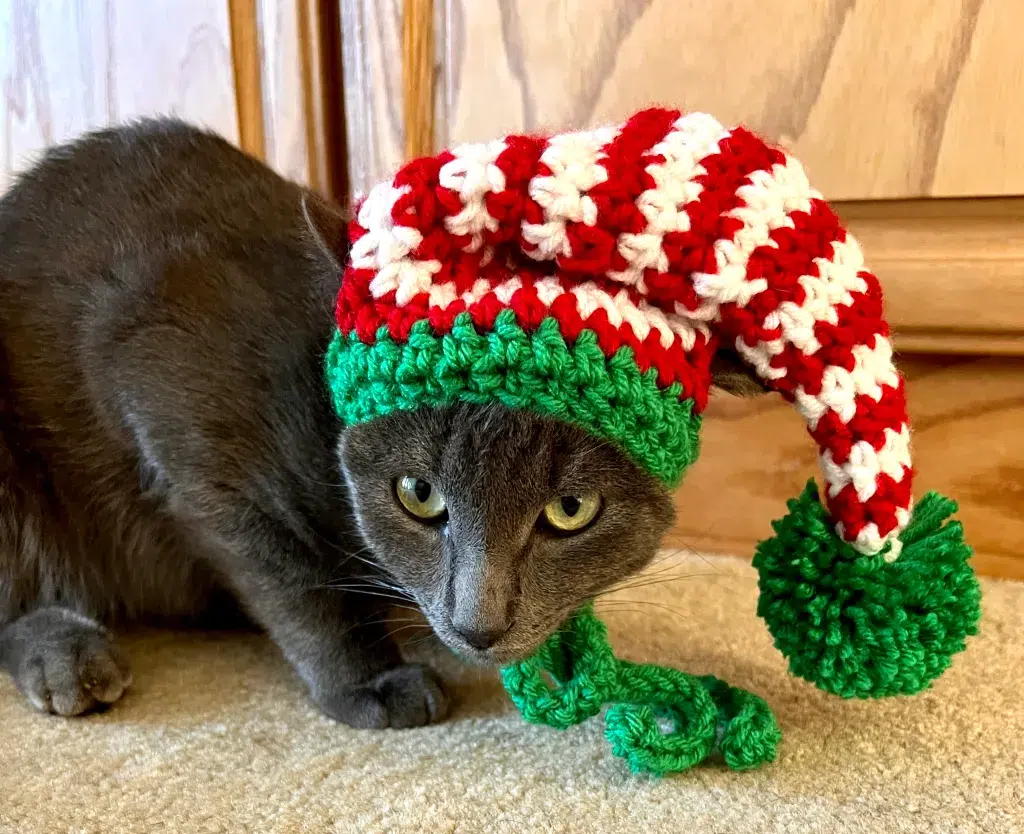
| Materials: | Yarn |
| Skill level: | Beginner |
| Other tools needed: | Crochet hook, scissors |
This candy cane-colored elf hat is another perfect addition to your cat’s Christmas. So, whether your cat wants to be Santa himself, or one of his little elves, we’ve got you covered!
13. Reindeer Cat Hat by Catventurous Crochet
| Materials: | Yarn (3 colors) |
| Skill level: | Intermediate-hard |
| Other tools needed: | Crochet hooks, darning needle, curved needle, tape measure |
Get your cat in the holiday spirit with this adorable reindeer antler cat hat. If you already have some experience crocheting, you should be able to accomplish this project. The video tutorial is detailed and well-narrated, with the stitches and techniques listed on-screen. The tutorial assumes that you’re already familiar with basic crochet techniques. If you’re new to crocheting, this probably isn’t the best project to start with. You can make this hat in realistic reindeer colors or get creative.
14. Crochet Witch Hat by Nicki’s Homemade Crafts

| Materials: | Yarn (black and purple) |
| Skill level: | Intermediate |
| Other tools needed: | Scissors, 4 mm crochet hook, tapestry needle |
Celebrate the spooky season by dressing your cat in this adorable witch hat. If you know basic crochet techniques and stitches, this written pattern should be easy to follow. The directions include a glossary of the stitch abbreviations and links to tutorials for each one if you need a refresher or are new to crochet crafts. The directions are specific, especially when explaining technical sections like creating the ear holes. Halloween is just the time to bribe your cat into a costume for pictures, and this witch hat is perfect for the occasion.

Paper & Pipe Cleaner
15. Paper Marching Band Hat by Modern Cat

| Materials: | Yarn |
| Skill level: | Beginner |
| Other tools needed: | Glue, scissors, ruler |
This paper marching band hat comes from Adam Ellis’s book about putting hats on cats. It’s one of the simplest designs and shouldn’t take long to construct. It’s fun and adorable, and your cat will look amazing.
16. Cardboard Birthday Cat Hat by Floppycats
| Materials: | Thin cardboard, curling ribbon, thin hair rubber band, paper (colored or white), printed pattern (optional), birthday hat template |
| Skill level: | Beginner |
| Other tools needed: | Printer, glue stick, scissors, stapler, pen or Sharpie, safety pin |
This cute birthday party hat is made using simple materials and basic office supplies. It requires an online birthday hat template. The link in the video description is expired but a quick search brings up multiple printable options. This birthday hat is quick and easy to make for even inexperienced crafters. It’s also completely customizable and you can personalize it with your kitty’s name to make their birthday even more special. Held in place with an elastic chin strap, this party hat is perfect for that celebratory birthday kitty social media post.
17. Pipe Cleaner Crown by Butters the Bean
| Materials: | Pipe cleaners |
| Skill level: | Beginner |
| Other tools needed: | None |
Fewer people have pipe cleaners lying around the home these days, but they’re inexpensive and easy to find online. This simple yet glamorous pipe cleaner crown adds a little bit of sparkle to your cat’s wardrobe!
Featured Image Credit: vvvita, Shutterstock







